- Home
- Daniel Quinn
CLONES: The Anthology Page 16
CLONES: The Anthology Read online
Page 16
Alice looked to John. “I’m not sure what that has to do with me. I’m a medical researcher. Alien technology is not exactly my area.”
Buckley smiled. “Oh we are very aware of your area of expertise. Advanced degrees in biological engineering, behavioral development, and medicine. You are a very well-educated woman. Which is why we think you’re perfect for the next re-engineering project.”
John opened the door next to them. Alice was hit with another blast of cold air. John stepped back and Buckley indicated she should enter first.
Alice was seized by an insane urge to turn around and run, as far and as fast as she could. But she straightened her shoulders and, with a deep breath, stepped inside.
Along one wall was a series of morgue doors from floor to ceiling. One body had been pulled out and sat in what looked like a glass coffin. But she knew it was an airtight container that would slow decomposition.
On shaky legs, she walked over to the chamber, her eyes focused on the being inside. It was only about three feet tall and, at first glance, could be easily confused with a child cadaver that had bloated during the decomposition stage.
But closer inspection showed the bloat wasn’t due to gases but a different physiology. The being’s torso was pear-shaped, almost triangular with wider hips coming to a point at the neck, which was about half the width of a human neck. The face was almost half the size of the body with a small chin and a bulbous skull. Two eyes dominated the face, the eyelids covering what lay beneath, and there was no nose. Its skin was a dark grey.
Alice stared at the being in mute fascination and horror. All the alien tales were true and she was looking at the proof. At the same time, it was so foreign it seemed unreal.
But despite the attempts to slow decomposition, she could see the telltale signs of it, as well as what looked like radiation burns.
John and Buckley stepped around to the other side of the chamber.
Alice’s stunned gaze met John’s serious one. “This is real.”
He nodded. “This is one of the beings from the Roswell crash. It was alive but hurt when it crashed. It lived for two months.”
Alice felt her jaw drop. “It was alive?”
He nodded. “We tried to save it but to no avail. Our researchers then performed numerous tests on the subject and his companions.”
“Companions?” Alice asked.
“There were five in total. This one is in the best shape.”
Alice wasn’t sure what to say. Her whole world had just tilted out of orbit.
Buckley smiled. “So, Doctor, now you see why we need your help.”
Alice looked at the being on the table. “No, I don’t. He’s dead.”
“Yes, but you asked what re-engineering project we wanted you to work on. Well, this is it. We want you to re-engineer him.”
IV
Six Months Later
Alice stepped back from the microscope.
“Well?” Dr. Frank Tieglen asked impatiently from next to her.
Alice shook her head. “Negative.”
Frank slammed the clipboard onto the lab table. “Damn it.”
It had been six months since she had begun working on Project B.E.G.I.N.: Biological Experiment of Genetic Interaction Nexus. But it had taken the majority of that time to develop the technology necessary to even attempt the cloning process. Alice had worked closely with engineers, perfecting each piece. Finally, a month ago, the tech was ready.
And it had been going well for the most part. Her process for splicing the nucleus of the donor egg had worked perfectly: it left the spindle proteins intact, meaning the egg should accept the new DNA.
Except it simply wasn’t.
Alice blew out a breath as she sank into the lab chair. “There’s got to be a reason. This should have worked.” She looked over at Frank. “I think the DNA was corrupted by the medical procedures they performed after he crashed or the procedures after his death.”
Frank smirked. “Or your little idea isn’t as powerful as you thought.”
Alice ignored him. Frank had not been happy when the powers that be had brought her into the project. Not that she could blame him. He’d been on the cusp of an incredible undertaking never before seen with man: the successful cloning of a living being.
She glanced toward the refrigerator which held the samples of DNA. But not a human being.
Alice pictured the poor being in the morgue. He had been in the best shape of all the creatures. The other four had been left to decompose outside in a truck for hours in New Mexico. Back then, they simply didn’t realize how important preserving the tissue was going to be and how to go about doing it. She’d tried to retrieve DNA from their bones, but they had been so different from human bones it was proving impossible. But the microscopic investigation of the bones demonstrated that there were fibers embedded in the bones. Alice wasn’t sure of their purpose, although she suspected they might strengthen them.
This one candidate was their best bet, but even his DNA was proving difficult. Alice was pretty sure that whatever tests they had performed on him, which she had not been given access to, had corrupted the DNA. She had found trace amounts of some unusual radiation and she was pretty sure some other scientists had irradiated the being at some point. Or maybe it had occurred in the crash. Regardless, it was interfering with the successful introduction of the DNA to the receptor cell. And she simply couldn’t think of a way around that beyond a new, clean set of DNA.
“I have forwarded your complaints to the committee. They are aware of your inability to make the DNA work,” Frank said.
Alice grit her teeth. Complaints, not observations or limitations of the data. Frank was easily the worst part of this job and the one thing she had been able to complain to Rick about, minus names or specifics of their work.
The door opened and Alice jumped to her feet as Colonel Clint Haven strode into the room. On the shorter side, with a large stomach and heavy jowls, he did not look like a military man. But he’d been in charge of the Foreign Technology Division for the last ten years.
Behind him, John walked in, an easy smile aimed at Alice.
“So, what have we got?” Clint asked.
“Nothing,” Frank said quickly with a quick glance at Alice. “Dr. Leander’s approach didn’t work.”
Gee thanks, Frank, Alice thought, struggling not to roll her eyes.
Clint turned toward her, raising an eyebrow. “Dr. Leander?”
She shook her head. “It’s not the technique; that’s sound. It’s the sample. It’s too degraded and too foreign. I think it may have even been irradiated at some point. We need a better batch of DNA—a complete strand of DNA—a normal strand of DNA. We’d be in a much better position.”
“We’re not studying normal,” the colonel said.
Alice swallowed down her annoyance. “I understand that but what we’re doing, it’s years ahead of anyone else in the field. We should try it on a DNA we’re familiar with to fine-tune the technique before we move on to an unknown genotype.”
Frank crossed his arms over his chest. “Well if you’re not up to the task—”
Alice cut him off. “I didn’t say that. But skipping steps may be prolonging the process.”
Clint studied her for a moment before turning to John. “Have them bring it in.”
John walked to the door and held it open as a soldier carried in a metal case, two feet wide by two feet long. The commander gestured for him to place it on the table. The soldier gently laid it down and the admiral waved him away. “Wait outside.”
Without a word, the solider turned and exited the lab. Alice turned her attention to the case. “What’s this?”
The commander nodded toward it. “Take a look.”
Frank walked over, carefully unlatching the top. He pulled it back, surprise flashing across his face. He pulled on gloves and reached in, pulling out a small skull, the size of a child’s.
Alice moved forward until she was s
tanding next to him. “That’s amazing,” she murmured.
“That’s not human,” Frank mumbled as he carefully placed the skull on a soft cloth on the lab table. The skull was incomplete, missing the jawbone. But what was there was unique.
At first glance, it did look like the skull of a young child, but closer comparison demonstrated the vast differences. The eye sockets were not as deep as a human’s. They looked only about half the depth of a human’s but were double the size. Alice couldn’t help but compare them to the being she’d seen in the underground lab. They were slightly smaller than that being’s. Did that mean this was a child?
“It’s light,” Frank said.
“It would have to be.” She pointed to the back of the skull. “There’s no inion.” The inion was a small projection at the back of the occipital bone. In humans, it helped sustain the weight of the head and also aided in the movement of the shoulder blades.
“There’s no sinus cavity either,” Frank observed.
In humans, sinus cavities aided in speaking as well as protecting people from dirt, pollutants, and dust. This being probably couldn’t speak and he would potentially have difficulty with air pollutants.
Frank turned the skull over. “There’s no arch at the top of the mouth.”
“And the cranial capacity—it’s enormous,” Alice said.
“It’s 1600 CCs,” John said.
Alice’s eyebrows rose. That was a full twenty-five percent larger than a human’s. “Where did this come from?”
“A cave in Mexico. It was brought to the United States in the 1920s. The skull sat in private hands until we came across it,” the colonel said.
“But before that, where did it come from?” Frank asked.
The colonel paused. “No one knows. It’s been carbon dated to at least a thousand years ago.”
A thousand years? “What does the DNA tell you?” Alice asked.
The colonel paused. “I need to remind you of your security clearance. Nothing you do, see, or say here is to leave the base. Any violation of that clearance will result in imprisonment up to 25 years.”
Alice swallowed. Well that’s not intimidating. But she didn’t say anything, just nodded.
Beside her, Frank did the same.
The colonel studied each of them before indicating for John to step forward. John handed them each a printout. Alice glanced at it, quickly scanning the information there. It was a genetic screening form. When she reached the bottom, she paused. Her mind could not believe the words written there.
She looked up, meeting John’s eyes. “Only half the DNA was identified as alien.”
The commander nodded. “What does that tell you?”
Alice’s gaze strayed back to the strange skull on the table. “It’s an alien human hybrid.”
V
Nine Months Later
Alice rushed down the hall, placing a hand on her large belly. Greta Schubert, the assistant who had joined the project eight months ago, caught sight of her and smiled, handing her gloves. “Perfect timing.”
“How is she?”
“Ready to burst.”
Alice smiled, thinking of all that had happened in the last nine months. The new DNA had taken on the third attempt and had been successfully implanted in a female cow named Betsy. The pregnancy had been amazingly uncomplicated. The fetus had developed successfully, although they couldn’t say normally because they were still unsure what to expect.
Alice pictured the being she had seen over a year ago and wondered if that alien had been similar to the one that had merged with the human, creating the source of this new DNA. But she had been unable to check. Once the process had been successful, all DNA information had been removed from the lab and their access had been completely restricted.
But they had learned quite a lot. The being growing inside Betsy had a lighter bone density and its skull was proportionally larger than a human skull.
And each time Alice checked the growth of the fetus, she couldn’t help but compare it to the growth of the little girl growing inside her own womb. She was eight months pregnant. And it had also been an easy pregnancy with one glaring exception: Rick had been killed in a training mission five months ago. Alice had thrown herself into work to cope. Her mother had moved in with her to take care of her and the baby when she arrived. And Alice knew she was investing probably too much in not only her pregnancy but the birth of the subject, but she wasn’t quite able to pull her emotions back. She needed both births to go perfectly.
Alice pushed through the OR doors, pulling on her gloves. Betsy was on the table, anesthesia keeping her still. A slit had already been cut along the cow’s underside and Frank glanced up. “Nice of you to join us.”
One thing that hadn’t changed in the past nine months: Frank’s attitude. Neither the success of the process nor the death of her husband had been able to soften his approach to her. “What do you need?”
Frank nudged his chin toward the warming tray against the wall. “Bring that over.”
Alice wheeled it over as Frank reached into the cow’s uterus. She glanced up at the monitors but the fetus’ heart rate seemed all right, or at least consistent with what it had been the whole pregnancy. It was at 150 beats per minute, which would have been elevated for a human, but it had been elevated the entire pregnancy, albeit decreasing over the course of time, as seen in human pregnancy.
“Here we go,” Frank said.
Alice’s gaze dropped to the incision as Frank gently pulled the fetus free. The first most notable characteristic was its color: pale grey. Alice’s heart plunged. Oh no. She had been expecting pink or at least the darker grey of the being she’d seen in the morgue. This grey simply looked unhealthy.
Frank quickly placed it on the warming tray. “Check its oxygen levels.”
But Alice didn’t need the order. She was already moving. Even as she hurried to check the creature’s vitals, she couldn’t help but observe it. Its forehead was large, the eyes closer together and larger than human eyes. In fact, they were at least twice the size and bulging slightly from the skull. The forehead was smooth and there was no indentation for the bridge of the nose. In fact, there was no nose, only two small holes. And the mouth was a tiny slit. Its jaw was also incredibly small. It moved its hand and she saw the four-fingered hand they’d observed on the ultrasound.
“Levels,” Frank barked.
Alice looked at them and nodded. “They’re fine. He’s fine.”
“The color’s not due to a lack of oxygen,” Frank said.
Alice nodded. “That’s his color.”
Frank walked over and looked at the being. And a rare smile crossed his face. “You realize what we’ve done.”
Alice smiled. “The first successful cloning of a living being.”
VI
Alice closed the incision on Betsy while Frank took over the care of the newborn. Alice watched with more than a little envy as Frank wheeled the incubator out of the room. Frank had instructed her to write up the report and take care of the OR. Alice grit her teeth but did as she was told. He was, after all, still head of the project, even if it was her process and steady hands that allowed for its success.
An hour later, she had finished filing her report and had euthanized Betsy. Poor girl had been at the end of her lifespan anyway and the pregnancy had not helped. She had bled profusely and Alice had been unable to stop it.
And the whole time she had thought about the creature. It was incredible. She quickly pulled off her gloves, dumping them in the hazardous waste bin and pushed through the OR doors, excited to go see what Frank had learned.
Greta walked down the hall toward her, a frown on her face.
“How is he?” Alice asked.
Greta shook her head. “Something’s wrong. Frank’s trying to figure it out. I think he needs your help.”
Alice was already moving past Greta toward the lab. She pushed open the door. Frank was leaning over the lab table. He frowned as
he looked up. “I thought I told you to write up the report.”
“I did. I had to put down Betsy. The bleeding became uncontrollable.”
Frank shrugged. “Not a surprise at her age.”
“How’s it going in here?”
Frank waved his hand toward the incubator at the end of the table. “His breathing is becoming labored. I just took some blood.”
“When did the breathing problem begin?”
“Almost as soon as we left the OR.”
Huh. The same time Betsy went into distress. Alice walked over to the incubator. Carefully, she placed her hands into the gloves attached to the machine and ran a gloved hand down the being’s hand, keeping an eye on its heart rate. The being’s heart rate began to stabilize. “The heart rate is stabilizing.”
“What?” Frank walked over. “What did you do?”
“Nothing. I just touched its hand.”
Alice pulled her hands back, and the heart rate began to race. “It’s scared.”
Frank scoffed. “Please. Try to remember you’re here as a scientist, not a woman.”
Alice grit her teeth. “There is a huge amount of research on the role of touch in the ability of babies to thrive.”
“Yes, but the effect is not that immediate.”
“Perhaps for this little guy it is. With him, we have to assume everything is going to work a little differently,” Alice said, placing her hands back in the gloves and touching its hand again. And its heart rate reduced.
Frank grunted before turning back to the microscope. “Well, I’m going to run the blood. You can play nursemaid.”
Alice ignored him, focusing on the little being. And as she did, she was hit by the reality of what she had done. She created a living being, one that was part human. She played God. And who, now, was going to look after him? Who was going to nurture his human side? Guilt and responsibility pulled at her as she ran her hand over his head. It’s okay, little guy. I’m right here. You’re not alone.
VII

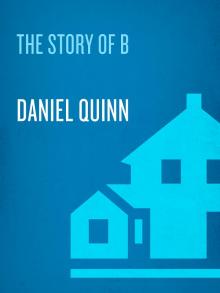 The Story of B
The Story of B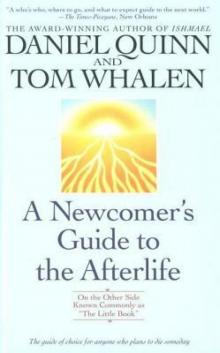 A Newcomer's Guide to the Afterlife: On the Other Side Known Commonly as the Little Book
A Newcomer's Guide to the Afterlife: On the Other Side Known Commonly as the Little Book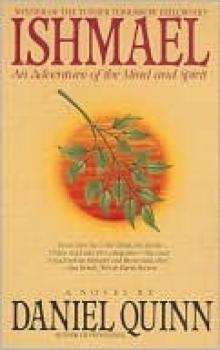 Ishmael: An Adventure of the Mind and Spirit
Ishmael: An Adventure of the Mind and Spirit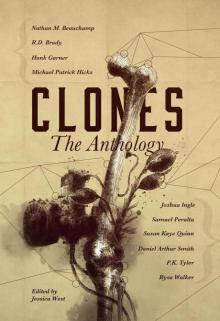 CLONES: The Anthology
CLONES: The Anthology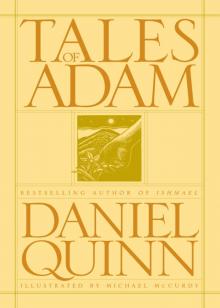 Tales of Adam
Tales of Adam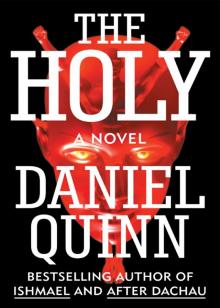 The Holy
The Holy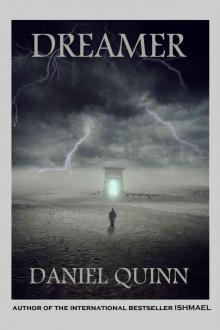 Dreamer
Dreamer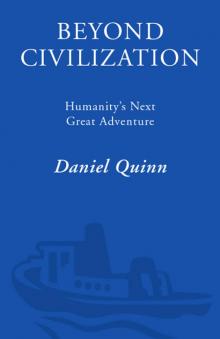 Beyond Civilization: Humanity's Next Great Adventure
Beyond Civilization: Humanity's Next Great Adventure After Dachau
After Dachau If They Give You Lined Paper, Write Sideways.
If They Give You Lined Paper, Write Sideways.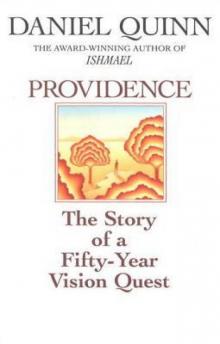 Providence
Providence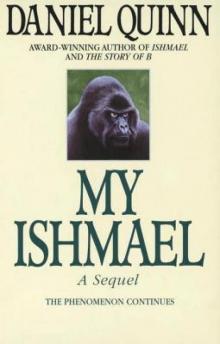 My Ishmael
My Ishmael Beyond Civilization
Beyond Civilization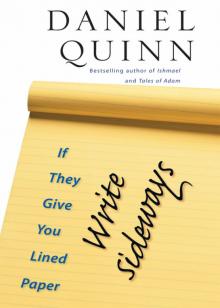 If They Give You Lined Paper, Write Sideways
If They Give You Lined Paper, Write Sideways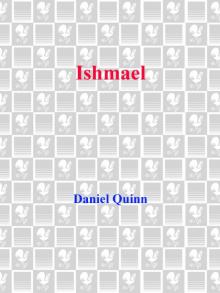 Ishmael
Ishmael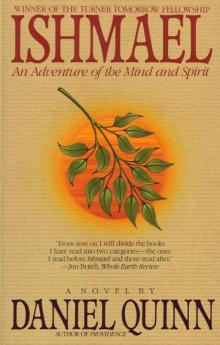 Ishmael i-1
Ishmael i-1 A Newcomer's Guide to the Afterlife
A Newcomer's Guide to the Afterlife